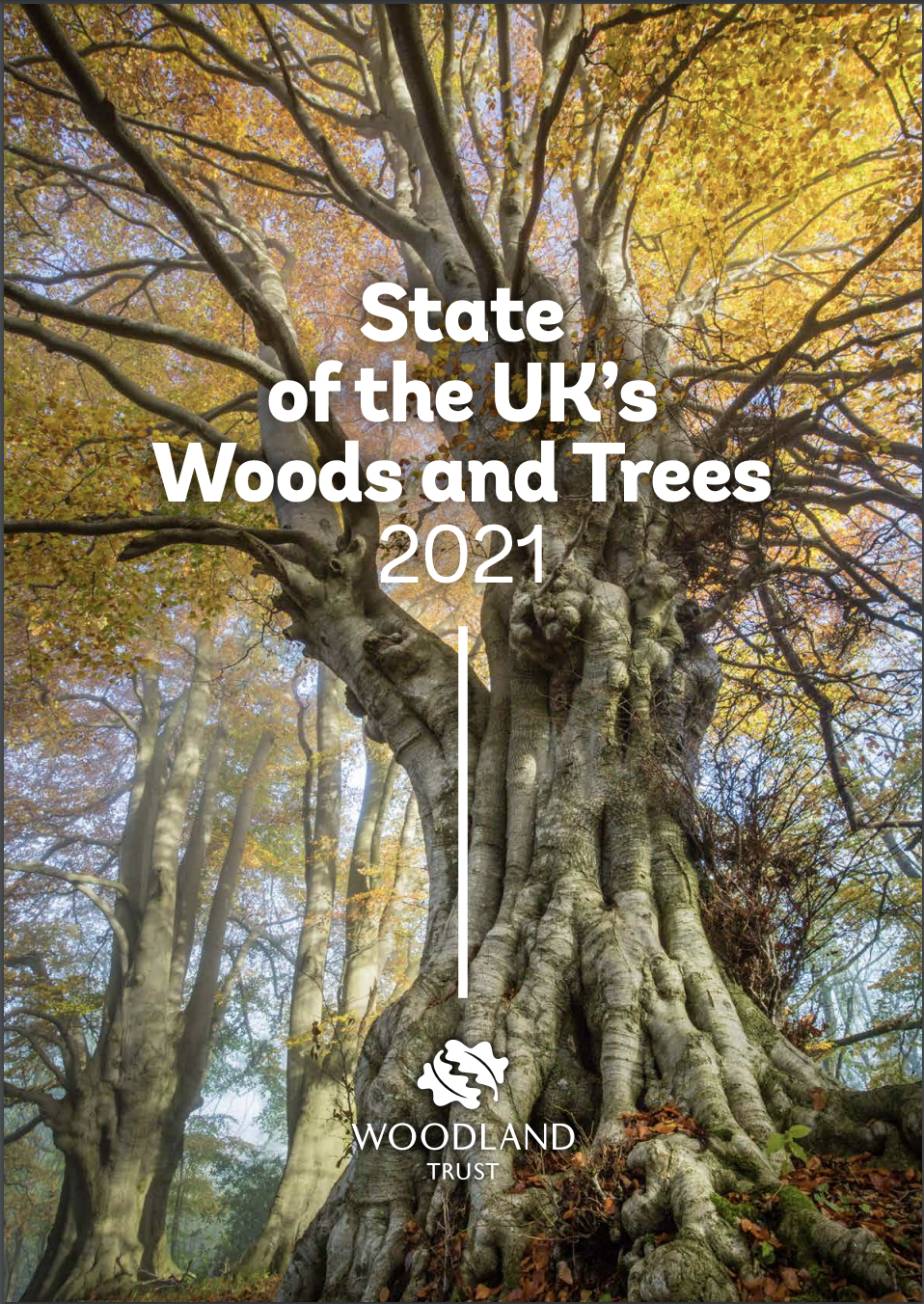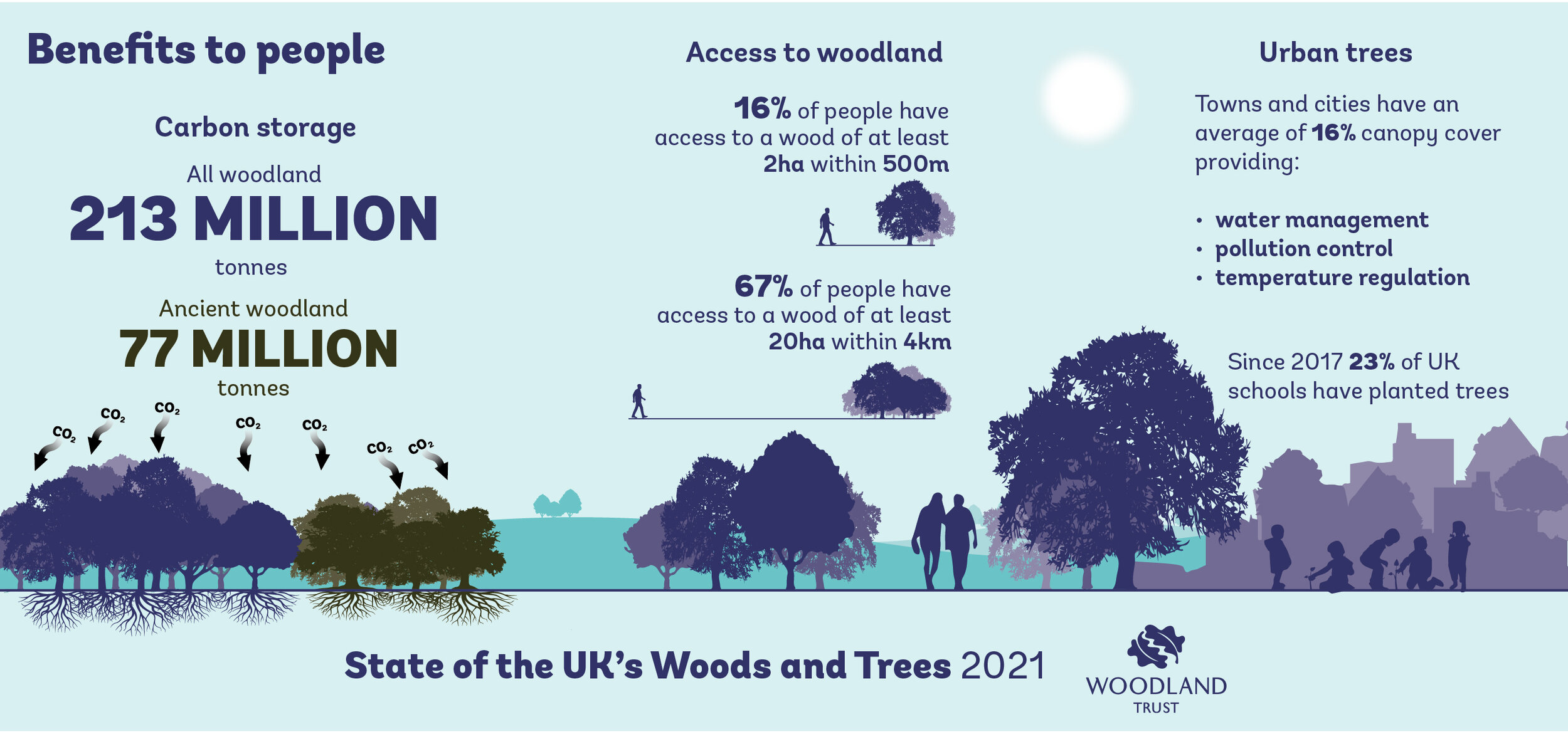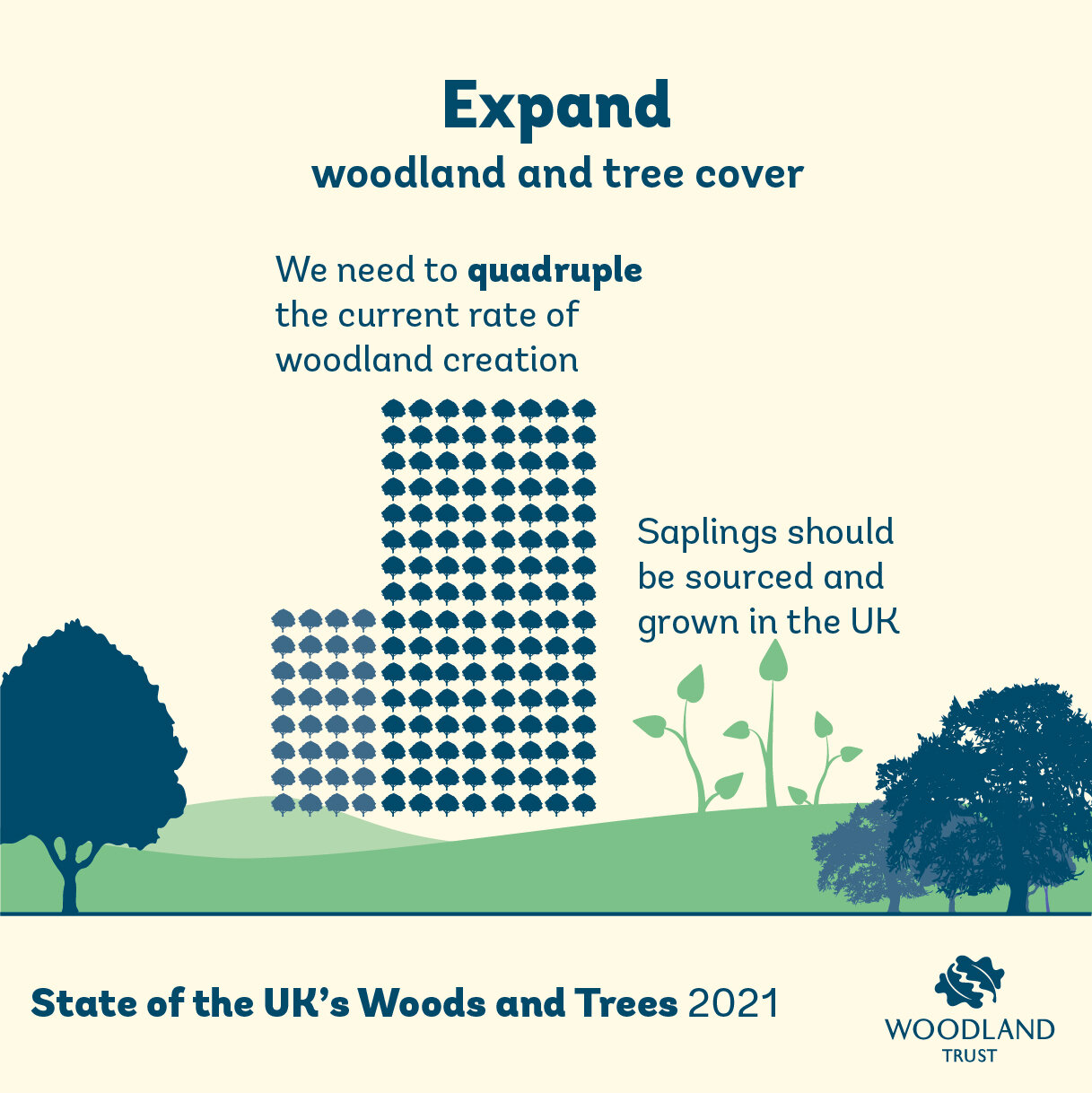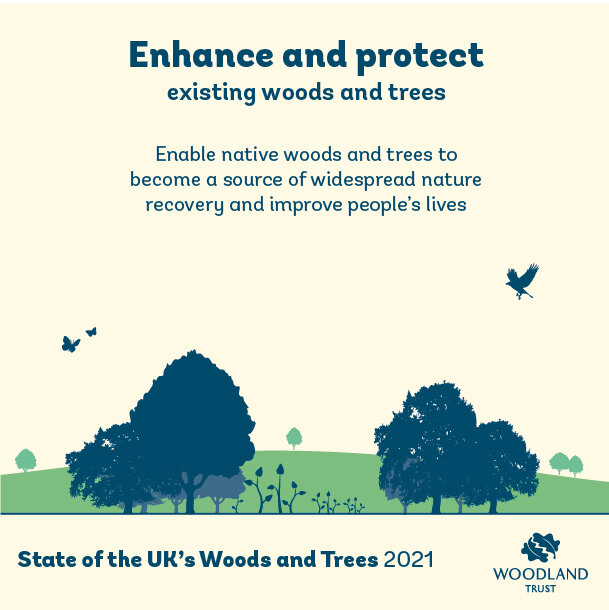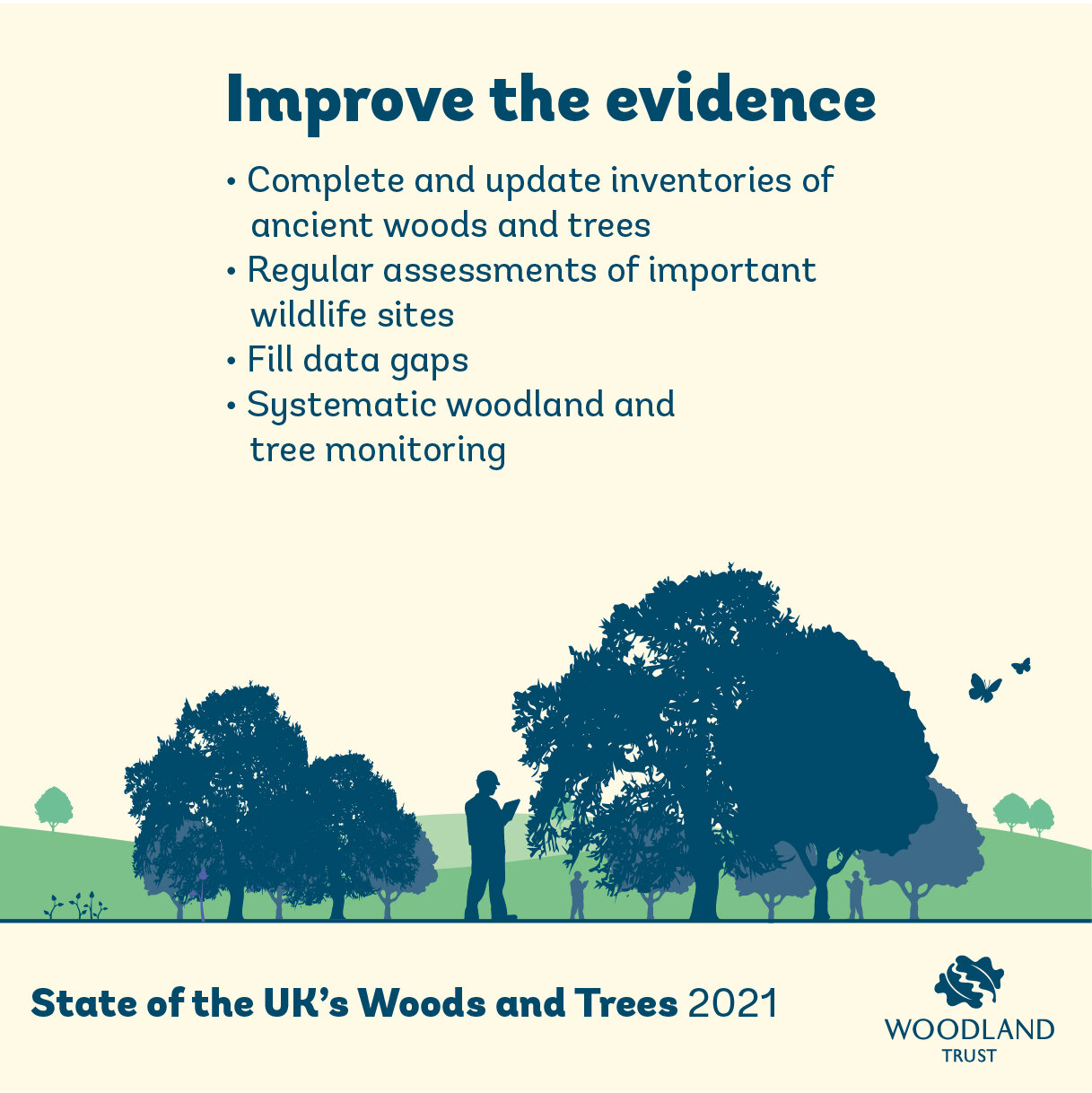State of the UK’s Woods and Trees 2021 is the first report of its kind laying out the facts and trends on the current state of the UK's native woods and trees.
At a glance - key findings
The analysis has identified four significant findings about the state of woods and trees.
1. Woodland cover is gradually increasing, but woodland wildlife is decreasing
The trends for the UK’s woods and trees are concerning. The UK’s woodland cover has more than doubled in the last 100 years, however much of this is non-native trees. Existing native woodlands are isolated, in poor ecological condition and there has been a decline in woodland wildlife.
2. Woods and trees are vital for a healthy, happy society
They lock up carbon to fight climate change, improve our health, wellbeing and education, reduce pollution and flooding, and support people, wildlife and livestock.
3. Woods and trees are subject to a barrage of coinciding threats
Threats range from direct woodland loss to more insidious influences from climate impacts, imported diseases, invasive plants, mammal browsing and air pollutants.
4. Not nearly enough is being done
The report is a loud and clear warning sign that more needs to be done to protect and expand our woods and trees. We urgently need to scale up the many inspiring initiatives to create native woods, put more individual trees back in the landscape, and restore damaged woods.
Priority actions
As a result of these findings, in order to help the UK’s woods, trees, wildlife and people, we recommend the following priority actions.
Expand woodland tree cover
We need to at least quadruple the current rate of woodland creation and increase the proportion of UK-grown native species to help tackle the effects of climate change and give nature a fighting chance of recovery.
Enhance and protect existing woods and trees
Enable native woods and trees to become a source of widespread nature recovery and improve people’s lives.
Improve the evidence
Inventories of ancient woods and trees need to be frequently undertaken as well as regular assessment of important wildlife sites. Data gaps need filling and there needs to be systematic woodland and tree monitoring.
Invest in the future
Time, money, people and innovation are needed to take on the challenge and create opportunities for woods and trees.


